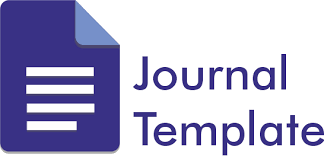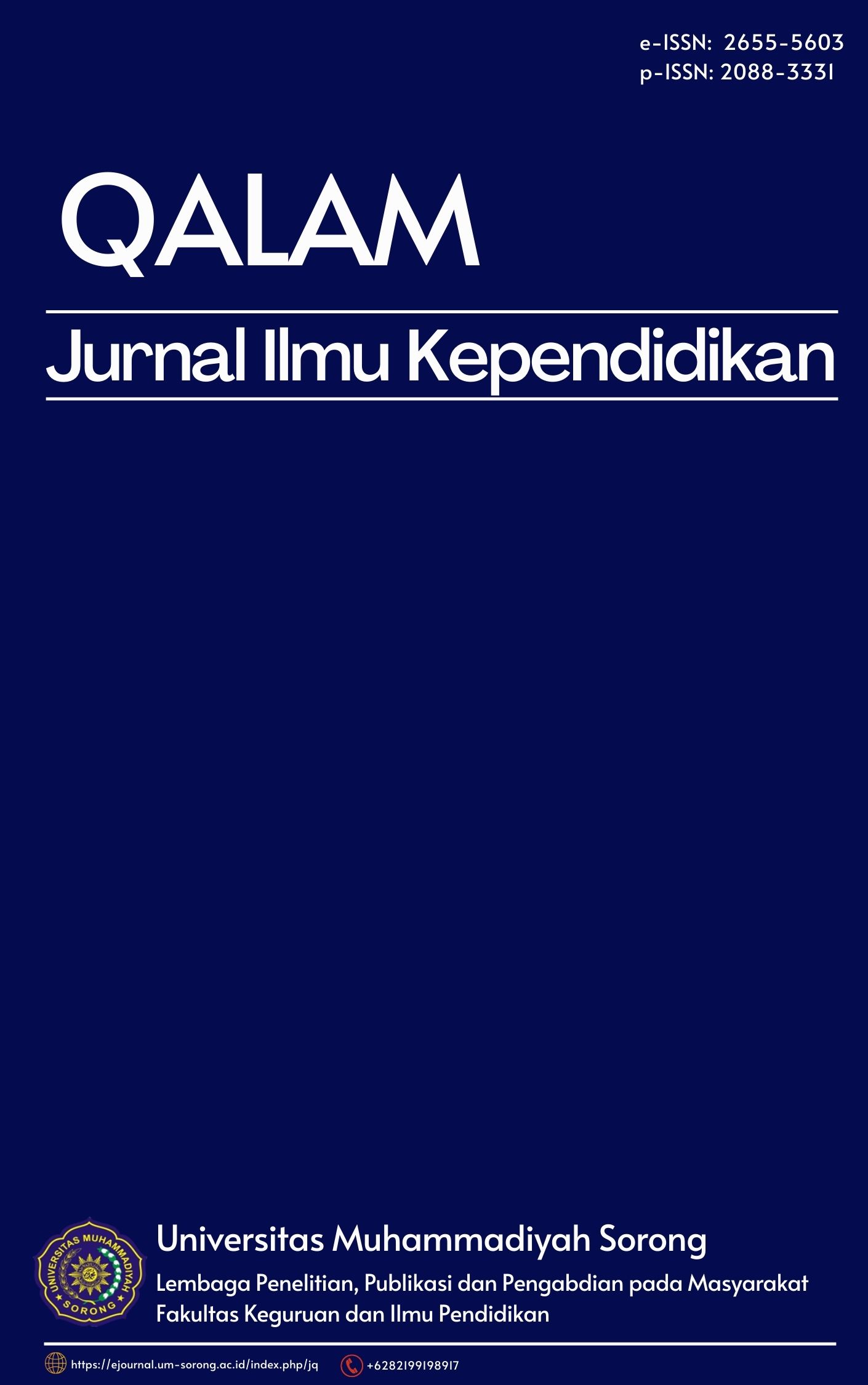CHARACTERISTICS OF GOOD ENGLISH TEACHERS BASED ON THE PERCEPTION OF THE STUDENTS FROM DIFFERENT LEARNING STYLES AND PERSONALITIES
DOI:
https://doi.org/10.33506/jq.v5i1.245Keywords:
Characteristics, Good English Teacher, Learning Styles, PersonalitiesAbstract
The  research aims are (i) Identifying the characteristics of good English teachers in SMAN 3 Sinjai Selatan. (ii) Knowing the characteristics of good English teacher based on the students’ learning style. (iii) Knowing the characteristics of good English teacher based on the students’ personality. This research was done by using a qualitative approach. The data were collected by using two instruments i.e. questionnaires and in depth interview. The results of this study reveal that (i) The characteristics of good English teacher based on the students’ perception in SMAN 3 Sinjai Selatan are categorized into four different categories, namely proficiency, pedagogical (both conceptual and practical), socio-affective and psychological aspect. The last category was the additional category in which age included in and differently from the work of Gi and  Hyo (2006) that only specified three categories, namely proficiency, pedagogical and socio-affective skills. (ii) In general, the characteristics of good English teacher based on the students’ learning style are dominantly in pedagogical aspect. Visual learners want English teacher who can keep the students’ focus and concentration in their learning; auditory learners expect English teacher who can engage the students’ motivation and interest toward learning English; and haptic learners propose the English teacher who concerns on the process rather than the achievement of the students in learning. (iii) The characteristics of good English teacher proposed by high school students based on their personality are dominantly on the teacher’s pedagogical and socio-affective aspects. Only a few ideas of the students that concern on the teacher’s proficiency and psychological aspect.References
Chapuis, Lea. 2003. Pedagogy: Embedding Learning Technologies, Module 1. Australia: Australian Capital Territory Education and Training. An article (http://www.principals.in/uploads/pdf/Pedagogy.pdf downloaded on January 27th, 2014, at 01.52)
Dalley, Leanne & Trim. 2007. Students’ Observation and Perception of Teacher Performances in the Classroom. An article. Australian Journal of Teacher Education, Vol. 32, No. 1.2. James Cook University.
Dessus, Philippe. Mandin, Sonia. & Zampa , Virginia. 2008. What is Teaching? Cognitive-Based Tutoring principles for the Design of a Learning Environment. An article.Common Inovation in e-learning, machine learning and humanoid (ICHSL6). Pp. 49-55.
Dunn, R. et al. 2009. Impact of Learning Style Instructional strategies in students’ achievemnt and attitude: Perception of educators in Diverse Institution. The Clearing House, January/ February: 135/ 141.
Elbow, Peter H., 1968. The definition of teaching. An article. College English. College English, Vol. 30, No. 3, December 1968, pp. 187-201. National Council of Teachers of English.
Ferguson, Ronald F. & Brown, Jordana. 2000.
Certification Test Score, Teacher Quality, and Student Achievement. An article. Analytic Issues in the Assassement of Student Achievement (pp. 133-156). Washington DC: National Center for Educational Statistics.
Gay, Mills & Airasian. 2006. Educational Research: Competencies for Analysis and Applications. Eight Edition. Ohio: Pearson Merrill Prentice Hall.
Gi, Pyo Park & Hyo, Woong Lee. 2006. The Characteristics of Effective English Teacher Perceived by High School Teachers and Students in Korea. An Article. Asia Pacific Education Review, 2006, Vol. 7, No. 2, 236-2248. Education Research Institute.
Halberstadt, Amy G., Denham, Susanne A., & Dunsmore, Julie C. 2001. Affective
Social Competence. An Article. (http://www.isce.vt.edu/files/ASC%20target.pdf downloaded on January 27, 2014, at 02.57) Oxford (UK), Malden (USA): Blackwell Publishers Ltd.
Husain, D. 1999. Learning and Personality Styles in Second Language Acquisition. Unpublished Thesis. Ujung Pandang: Hasanuddin University.
Husain, D. 2011. Fostering Autonomous Learning Inside and Outside the Classroom in Language Learning. Makassar: Badan Penerbit UNM.
Kise, Jane & Russell, Beth. 2011. Personality Type Applications in Education: Are They Really Problem Students? Bridging Differences through Understanding. An Article. (http://www.personalitypathways.com/MBTI_articles4b.html downloaded on July 8, 2014 at 14.02)
Koehler, Mathew. 2011. Pedagogical Knowledge. TPAK-Technological Pedagogical
Content Knowledge. An article.
(http://mkoehler.educ.msu.edu/tpack/pedagogical-knowledge-pk/ downloaded on January 27th, 2014, at 01.55)
Lamb, Martin Veevers. 2007. The Motivation of Junior High School Pupils to Learn English in Provincial Indonesia. Dissertation. School of Education, The University of Leeds: Leeds.
Meador, Derrick. 2014. Personality Types of Students in a Typical Classroom. An article. (Online). http://teaching.about.com/od/pd/a/Personality-Types-OfStudents-In-A-Typical-Classroom.htm (accessed on February 21st, 2014 at 17.27)
Montgomery, Susan M. & Groat, Linda N. 1998. Students Learning Styles and Their Implication for Teaching. Paper. The Center for Research in Learning and Teaching, The University of Michigan: Ann Arbor.
Mullock, Barbara. 2003. What makes a good teacher? the perceptions of postgraduate TESOL students. An article. Prospect, Vol. 18, No. 3, December 2003. The University of New South Wales, Sydney, Australia.
Musthafa, Bachrudin. 2010. Teaching English to young Learners in Indonesia: Essential Requirements. An article. Educationist, Vol. IV, No. 2, July 2010.
Norris, Simpson. 1999. Language Teacher Proficiency or Teacher Language Proficiency. An Environmental Scan of Information Relating to the Competencies/Qualities/Knowledges Required to be an Effective Language
Teacher. A Report Prepared for the Nalsas Taskforce.
(http://www1.curriculum.edu.au/nalsas/pdf/language.pdf downloaded on January 26th, 2014, at 16.16)
Nunan, David. 1992. Research Methods in Language Learning. Cambridge: Cambridge University Press.
O’Brien, L. 1990. Learning Channel Preference Checklist (LCPC). Rockville, MD: Spesific Diagnostic Service.
Peraturan Menteri Pendidikan Republik Indonesia, Nomor 16 Tahun 2007 tentang Standar Kualifilasi Akademik dan Kompetensi Guru.
Phern, Corinne Vong Siu. & Abidin, Mohammad Jafre Zainol. 2012. Student Voice Contribution in Determining the Effective English Language Teacher: A Collective Case Study as a Concept Paper. An article. International Journal of Humanities and Social Science, Vol. 2, No. 22, Special Issue-November 2012.
Pollard, Andrew. 2010. Professionalism and Pedagogy: A contemporary opportunity. A commentary by Teaching and Learning Research Programme (TLRP) and General Teaching Council for England (GTC), Institute of Education, University of London: London.
Reid, J. 1995. Learning styles in the ESL/EFL classroom. Boston, MA: Heinle and Heinle Publishers.
Sesek, Urska. 2007. English for Teachers of EFL-Toward a Holistic Description. An article. English for Specific Purposes Journal, 26 (2007), 411-425. Published by Elsevier Ltd. The American University.
Shulman, Lee S. 1987. Knowledge and Teaching: Foundations of the New Reform. An article. Harvard Educational Review, Vol. 57, No. 1, February 1987.
Solis, Adela. 2009. Pedagogical Content Knowledge: What Matters Most in the Professional Learning of Content Teachers in Classroom with Diverse Student
Populations. IDRA-Intercultural Development Research Association. (Online). An Article. http://www.idra.org/IDRA_Newsletter/August_2009_Actionable_Knowledge/Pedagogical_Content_Knowledge/ accessed on January 27, 2014, at 01.59)
Sugiyono. 2012. Metode Penelitian Kombinasi (Mixed Method). Bandung: Alfabeta Bandung.
Tellis, Winston. 1997. Introduction to Case Study (online). The Qualitative Report, Volume 3, Number 2 (http://www.nova.edu/ssss/QR/QR3-2/tellis1.html, accessed at 9 December 2013)
The Association of Teachers of English as a Foreign Language (TEFLIN). 2011. Pernyataan Kebijakan: Tentang Pengajaran Bahasa Inggris di Indonesia. A paper. Universitas Pendidikan Indonesia: Bandung.
Thompson, Susan., Geer, John G., & Geer, Bonnie B., 2004. Highly qualified for successful teaching: Characteristics every teacher should possess. An article. Download at http://www.usca.edu/essays/vol102004/thompson.pdf vol. 10, 2004. The University of Memphis.
Undang-Undang Republik Indonesia Nomor 14 Tahun 2005 Tentang Guru dan Dosen. Departemen Pendidikan Nasional.
Undang-Undang Republik Indonesia Nomor 20 Tahun 2003 Tentang Sistem Pendidikan Nasional. Departemen Pendidikan Nasional.
Walgito, Bimo, 1991. Psikologi Sosial (Suatu
Pengantar). Yogyakarta: Andi Offset.
Wichadee, Saovapa. 2009. Defining the Effective English Language Teacher: Students and Teachers’ Perspective http://www.bu.ac.th/knowledgecenter/epaper/ jan_june2010/pdf/Page_01.pdf JALT Annual Conference, (21-23 November 2009) Shuzouka, Japan.
Wichadee, Saovapa. 2011. Professional Development: A path to Success for EFL Teachers. An article. Contemporary Issue In Education Research, May 2011, Vol. 4, No. 5.
Downloads
Published
How to Cite
Issue
Section
License
The article copyright is owned by the author and Qalam: Jurnal Ilmu Kependidikan

This work is licensed under a Creative Commons Attribution-ShareAlike 4.0 International License.




